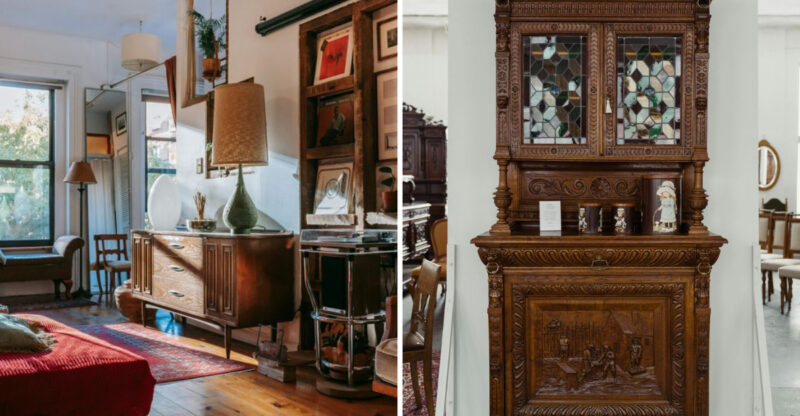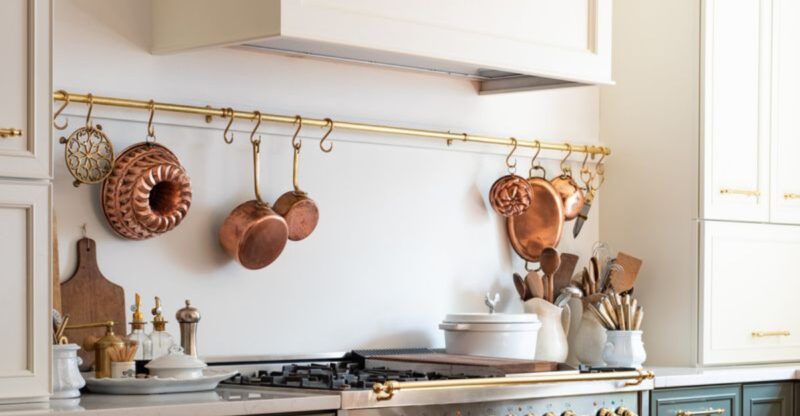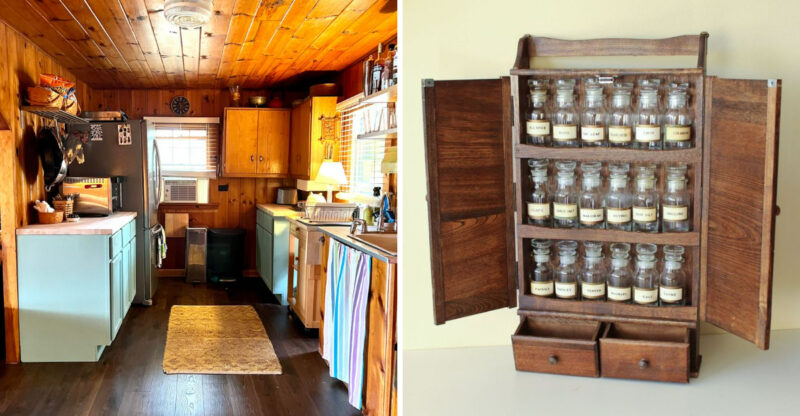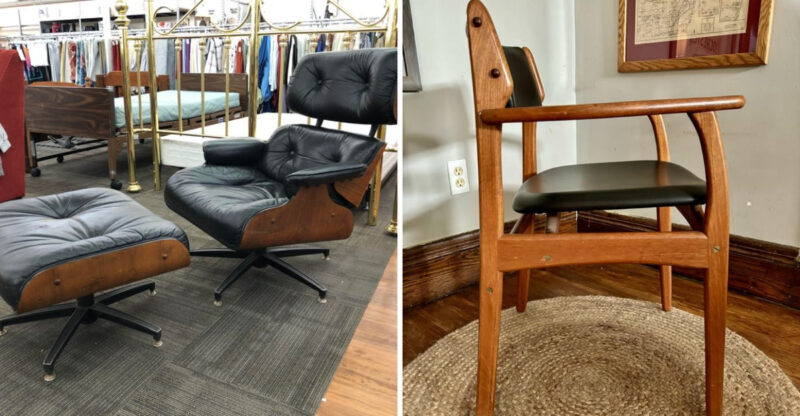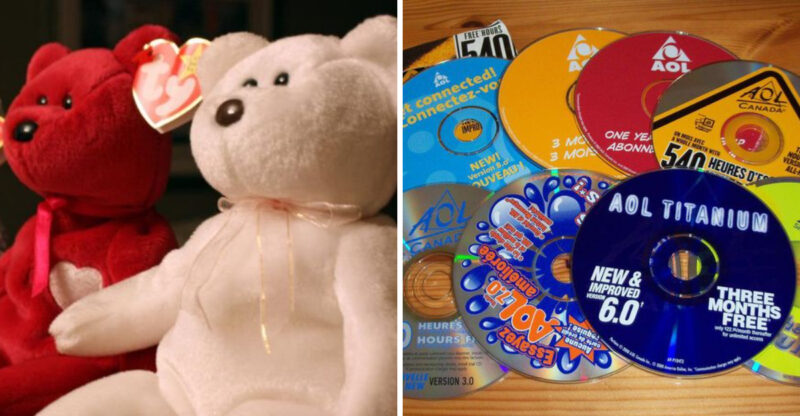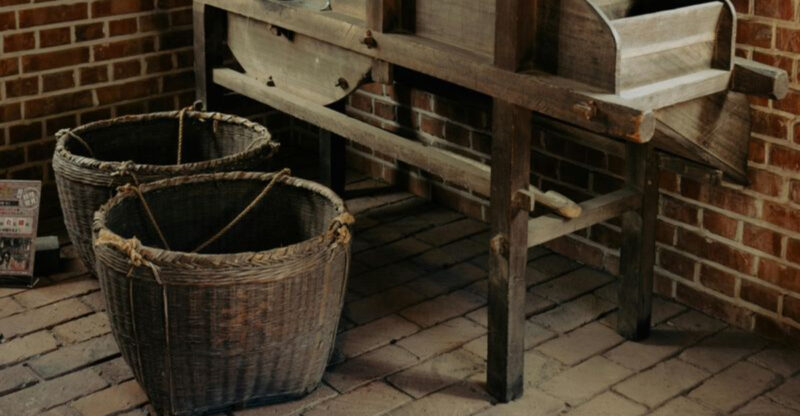7 ’90s Furniture Looks That Might Not Make A Comeback
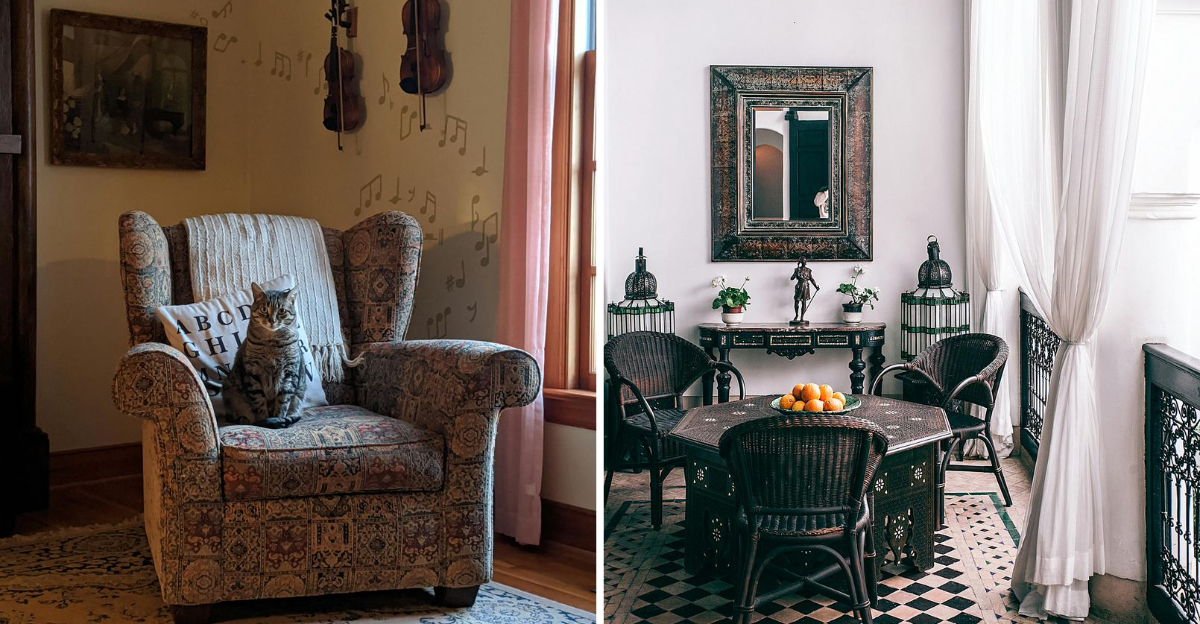
Remember the ’90s? It was a time of boy bands, dial-up internet, and some truly questionable furniture choices. As we look back at home decor from that era, certain pieces stand out as particularly dated.
While some vintage styles are experiencing revival, these 18 furniture trends from the Clinton years probably won’t be gracing the pages of design magazines anytime soon.
Keep in mind, style is subjective, and what feels outdated to some might still appeal to others depending on personal taste and nostalgia.
1. Glass-Top Coffee Tables With Brass Frames
Once the centerpiece of countless living rooms, these transparent-topped tables with their shiny brass frames screamed ’90s luxury. The combination of cold glass and gaudy metal created a look that was trying desperately to appear expensive but often achieved the opposite effect.
Fingerprints, dust, and inevitable scratches made these high-maintenance pieces a constant cleaning challenge. Most modern homeowners now prefer coffee tables with warmth and character think natural wood, subtle metals, or even upholstered options.
The harsh angles and clinical feel of glass-brass combos have been replaced by organic shapes and materials that invite touch rather than constant polishing. While minimalism is back, today’s version embraces texture over shine.
2. Large Sectional Sofas In Pastel Colors
When it came to ’90s seating, bigger apparently meant better. Enormous sectional sofas in ice cream colors like mint green, peach, and powder blue dominated living rooms across America. These sprawling seating arrangements often included built-in recliners and even phone tables remember those?
The microfiber or velour upholstery showed every stain while collecting pet hair with magnetic efficiency. Cushions inevitably sagged in the most-used spots, creating permanent body impressions that no amount of fluffing could fix.
Many featured those weird armrest compartments for remote controls and drink holders that collected crumbs for decades. While sectionals remain popular today, modern versions feature cleaner lines, more durable fabrics, and sophisticated neutral palettes that won’t make your eyes hurt after prolonged exposure.
3. Oak Bedroom Sets With Heavy Carvings
Massive oak bedroom suites with their imposing headboards and chunky proportions dominated ’90s master bedrooms. The ornately carved details on drawer fronts and headboards collected dust in crevices impossible to clean without specialized tools or extreme patience.
These bedroom sets typically included matching nightstands, dressers, armoires, and even vanities creating spaces that felt more like furniture showrooms than personal retreats. The golden-hued wood darkened dramatically over time, making rooms feel increasingly cave-like as years passed.
Moving these behemoths required disassembly, multiple strong friends, and doorways wider than standard construction provided. Today’s bedroom furniture embraces lighter woods, mixed materials, and modular pieces that can adapt to changing needs rather than committing entire rooms to a singular overwhelming style that screams “time capsule from 1994.”
4. Chrome And Glass Bar Carts
During the cocktail revival of the ’90s, these reflective drink stations rolled into suburban homes with their mirrored shelves and tubular chrome frames. Despite few homeowners actually mixing martinis on a regular basis, these carts became status symbols often positioned prominently in living rooms.
The chrome inevitably showed fingerprints and water spots, while the glass shelves highlighted every speck of dust. Most ended up as awkward plant stands or holding decorative items instead of the sophisticated bar tools their owners initially envisioned.
The wheels that seemed so practical typically locked up after minimal use, rendering the “cart” part essentially decorative. While bar carts have made a comeback in recent years, today’s versions feature warmer materials like brass and wood that integrate more naturally into living spaces rather than looking like they escaped from a 1990s hospital drama.
5. Plastic Stackable Chairs
Every ’90s backyard barbecue featured these monobloc chairs in forest green or white, stacked in precarious towers when not in use. The single-piece molded plastic design meant they could never be comfortable for any human body shape, creating that special back sweat that occurred within minutes of sitting.
Their legs would sink into soft grass, tilting at alarming angles throughout meals. The armrests were positioned at exactly the wrong height for actual arms, while the backs hit precisely where they would cause maximum spinal discomfort.
After a few seasons outdoors, they developed a peculiar sticky film that no amount of cleaning could remove. While inexpensive outdoor seating still exists, today’s options include foldable designs with actual padding or ergonomic considerations rather than these torturous plastic shells that seemed designed by someone who had only vaguely heard about human anatomy.
6. Faux Wicker Patio Furniture
Outdoor spaces in the ’90s were dominated by white plastic chairs and tables molded to imitate wicker but failing spectacularly. These lightweight pieces blew across neighborhoods during mild breezes, becoming community property by default.
The hollow legs collected rainwater that would unexpectedly dump on your lap when you moved the chair. After a single season in the sun, the pristine white plastic turned a sickly yellow, with brittle areas that would crack suddenly, creating sharp edges that snagged clothing and skin.
The cushions featured floral patterns in teals and corals that faded to unidentifiable hues within weeks of exposure to sunlight. Modern outdoor furniture embraces weather-resistant materials that actually withstand the outdoors rather than these plastic pretenders that degraded into hazardous waste after minimal exposure to the elements they were supposedly designed for.
7. Patterned Velour Armchairs
No ’90s formal living room was complete without a matching set of velour armchairs featuring abstract swirls in jewel tones. The fabric simultaneously attracted pet hair while repelling actual comfort, creating a sitting experience best described as “formally uncomfortable.”
The wooden arms and legs typically featured carved details or turned spindles that bore no relationship to any other furniture in the home. Many included those weird protective doilies on the arms and headrests, essentially admitting the impractical nature of the fabric choice.
Sitting on these chairs produced that distinctive swooshing sound as the nap of the fabric changed direction under your weight. Modern accent chairs embrace textural interest without the static electricity generation of these fuzzy dust magnets that now populate the staging areas of community theater productions, their dated patterns instantly transporting audiences back to the Clinton administration.

